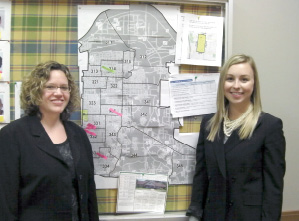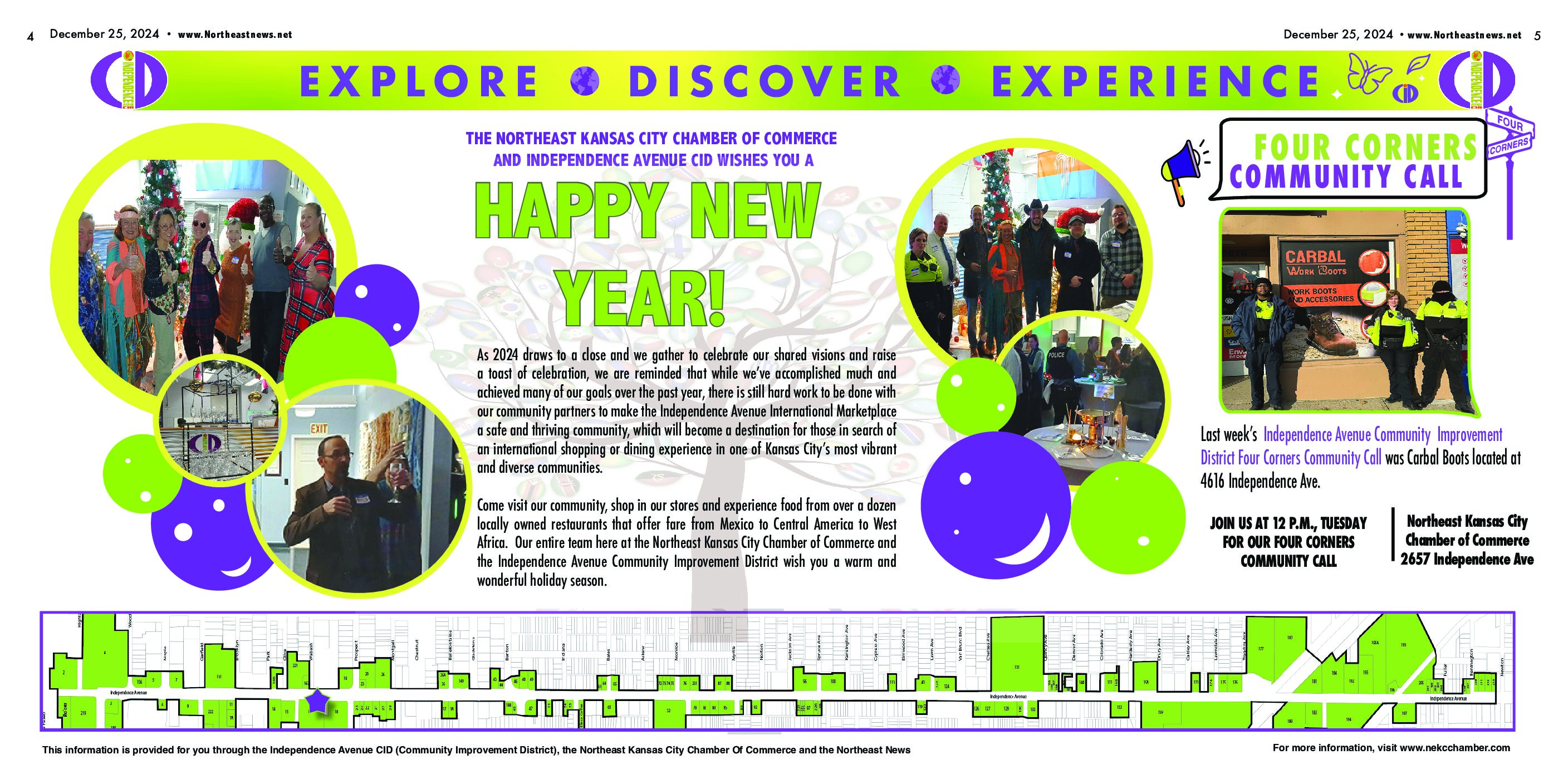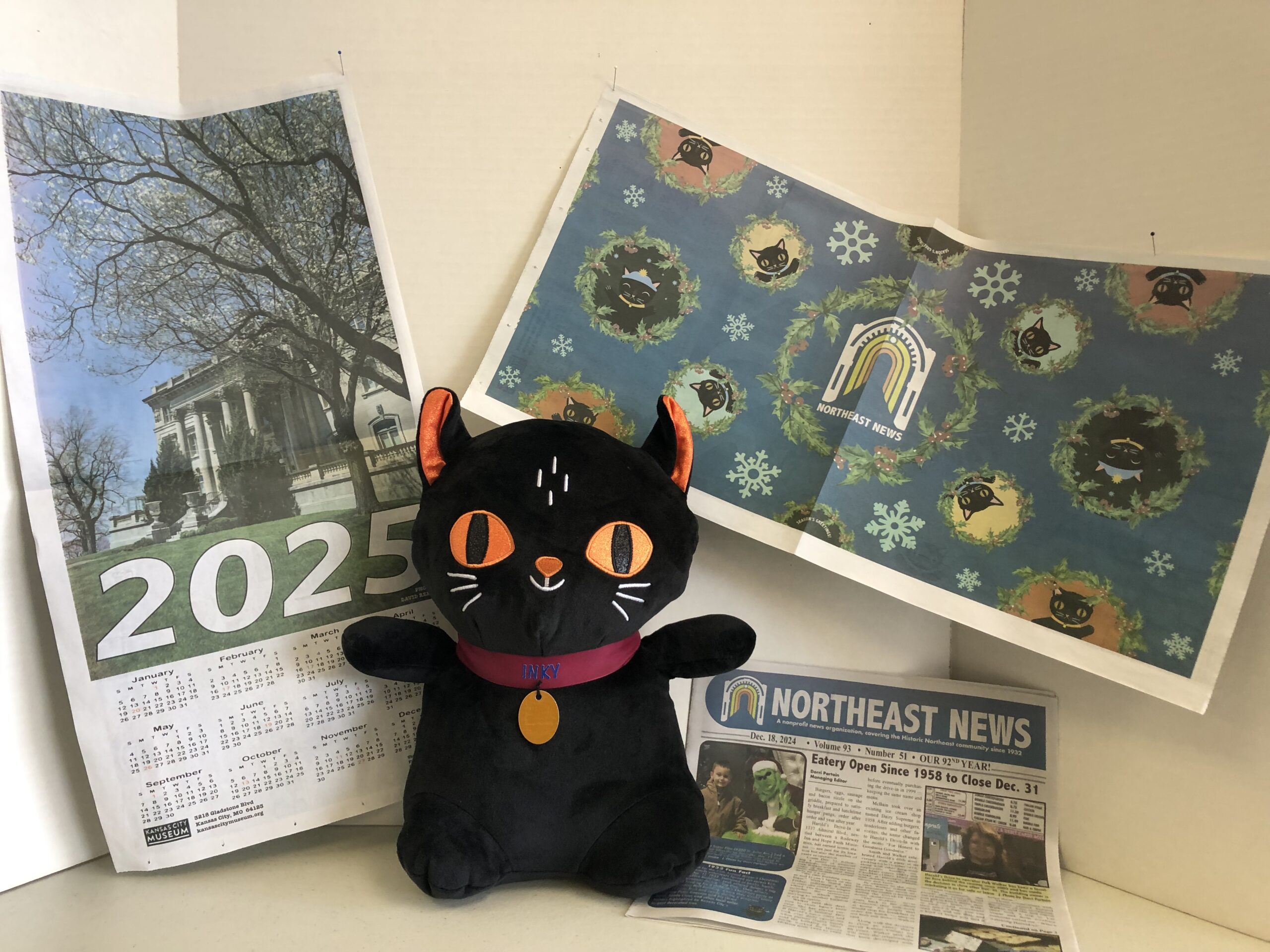
By Leslie Collins
Northeast News
May 4, 2011
Graffiti. Prostitution. Drug dealing.
All are common crimes in Historic Northeast and two women are fighting to stop these crimes and others.
Since September, Community Prosecutor Monica Smith and Community Legal Investigator Lindsay Arbuthnot have been tracking persistent offenders in Kansas City Police Department’s East Patrol zone.
The two are part of the Neighborhood Prosecution Team, an unprecedented program in Kansas City.
“We are the first neighborhood prosecution project at the city level ever in Kansas City,” Arbuthnot said.
Although Jackson County has employed community prosecutor’s since the 1990s, Kansas City has never had it’s own community prosecutor and community legal investigator at Kansas City Municipal Court, Arbuthnot said.
Currently, the program is funded through an 18-month federal grant, the Edward Byrne Jag Grant.
Asked why East Patrol was chosen, Arbuthnot said East Patrol receives the highest number of service calls in Kansas City.
“Most of them deal with quality of life crimes, which is what we deal with at municipal court,” Arbuthnot said.
Quality of life crimes include graffiti, trespassing, loitering, prostitution, low level drug dealing, illegal dumping, abandoned vehicles and nuisance properties.
“It’s a very valuable tool,” East Patrol’s Community Interaction Officer Jason Cooley said of the program. “It just brings another dimension, another piece of the puzzle for us to work on to enforce laws.”
Forty repeat offenders are on Arbuthnot and Smith’s radar and Smith explained how the system works.
Kansas City Municipal Court processes an average of 1,500 cases per day, she said.
“There’s eight different court rooms with eight different judges,” Smith said. “Our prosecutor’s office is set up with mostly part-time prosecutors, so for persistent offenders that have multiple tickets written by multiple officers, they can be seen in front of multiple judges and multiple prosecutors.
“It’s difficult for the system to keep track of them (offenders) and make appropriate case recommendations because there’s not one consistent person following their cases.”
However, that’s changing with the neighborhood prosecution program.
For the offenders on her list, Smith is serving as the sole prosecutor and monitors the cases closely. Arbuthnot helps compile research and analyzes data.
Detailed maps, mug shots and other vital information fill the message boards in their office. With the help of East Patrol officers, they update the information regularly.
“One of our main goals was to bridge the gap between the city prosecutor’s office and the police department,” Smith said. “We feel like we’ve made significant strides.”
Cooley agreed.
“It brings in a level of communication that was absent before,” he said. “They’re actually out here seeing with their own eyes what’s going on and dealing directly with the officers on a day to day basis almost.”
Both Arbuthnot and Smith are continuing to attend police roll calls for each shift and sector, along with intelligence meetings and ride-alongs.
“Because we work with the police department, we’re able to learn more about their (criminal’s) history. We’re able to be notified of their cases and make appropriate case recommendations,” Smith said.
To further fight crime, the two picked two crime “hot spots” with the help of East Patrol. Within those hot spots, they identified the top ten persistent offenders.
One hot spot, 27th and Prospect, is known for crime.
“For decades it’s been known to the city as a drug area,” Arbuthnot said.
“There’s a high rate of crime at that intersection,” Smith added.
The second hot spot was Independence Avenue, known for drug activity and prostitution. However, since they’ve seen less criminal activity there, the two are looking for a new hot spot.
Community role
Smith and Arbuthnot are making the rounds at area neighborhood association and community meetings and both want community input.
“We can look at these maps and say, ‘Oh there’s obvious drug activity,’ but they (community) might not be concerned with that. They might think illegal dumping is the biggest issue in the area,” Arbuthnot said.
“We’d like the community to participate in solutions for criminal activity in their neighborhoods,” Smith said. “What do they think the problems are, what do they think the solutions should be and then have a discussion about what’s feasible or what alternatives there are.”
Cooley commended the Neighborhood Prosecution Team’s efforts of reaching out to the community.
“I know they’ve adjusted their schedules on numerous occasions in order to attend all of the neighborhood association meetings,” Cooley said. “I believe these gals are highly motivated and taking the step to open up lines of communication not only with the police department, but also with the community.”
Above, Community Prosecutor Monica Smith, left, and Community Legal Investigator Lindsay Arbuthnot stand in front of their message board filled with an East Patrol map of crime hot spots and persistent offenders. Leslie Collins

















